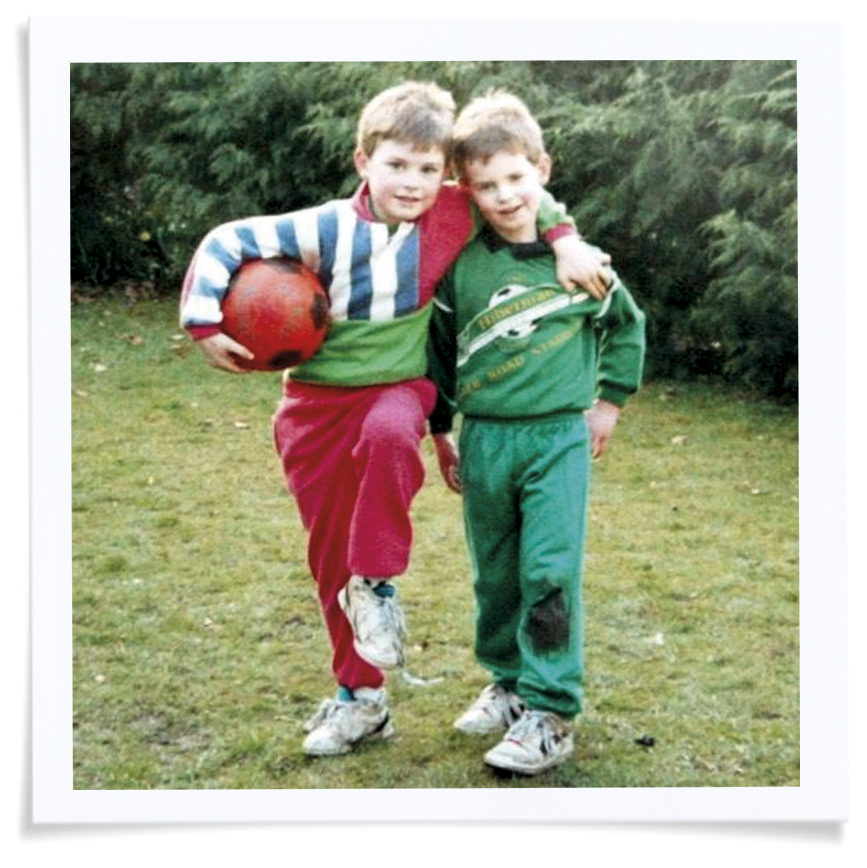- Home |
- Search Results |
- Judy Murray’s top tips for rasing active kids
Judy Murray’s top tips for rasing active kids
Knowing the Score author, mother and tennis coach to the current world No. 1 – when it comes to channeling kids' energies, Judy Murray knows her stuff. She shares some of the games she played with her sons Jamie and Andy Murray as they were growing up

When I was a young mum in Dunblane with two restless, over-active kids twenty years ago, I was always on the lookout for ways to keep them occupied and tire them out. We would invent games using things lying around the house. With the boys, and later when I was coaching young kids in tennis, I tried to come at everything from the angle of actually playing the game, competing for enjoyment and having fun. You won’t always have the facilities, the finances or the expertise, but you can always have fun - anywhere, anyhow.
Here are some games the boys and I played when they were little. These are easy-to-follow activities for parents to play with their children. Your playing area can be as big or small as you want, and the equipment can be anything from hands and feet to biscuit tin lids, cushions, balloons, water bombs... all you need is a bit of imagination.
Cereal Box Table tennis
The best games are usually the ones that kids invent themselves, but initially you may have to make some up using whatever equipment and space you have available.
HOW TO PLAY: One of our favourite games was Cereal Box Table Tennis, played on the kitchen table with a net made of cereal boxes, 2 pieces of thick cardboard for bats, and a ping pong ball.
STEP IT UP: Make a mini tennis court with rope or boundaries and a net made from two chairs and a roll of parcel tape. Or a cricket pitch with a stack of cereal boxes, a ball and a poster tube bat.
Double Trouble
One of the best passing and receiving games we played was Double Trouble, which is really just passing and catching two balls at the same time. This is a great way to help kids understand rhythm, but it will also improve coordination and concentration.
HOW TO PLAY: Start off facing each other, about one step apart and with one ball each. Say "1, 2, 3, GO!", and both throw the ball at the same time to each other. As soon as you have both caught the ball, say "1, 2, 3, GO!" and send the ball again.
STEP IT UP: As soon as this becomes easy, take a step backwards to increase the distance. Add a hoop or a chalk circle between you and bounce the ball in the circle before you catch it. Count how many passes you can make before you lose control of the ball. Try to make the two balls hit each other! This will test your aiming skills and is great fun.
Boom Boom Balloon
Balloons are a great way to introduce catching skills in young kids. They are also perfect for developing coordination and awareness of body parts!
HOW TO PLAY: Start off with one balloon. Parent taps it in to the air and child catches with both hands. Swap roles. Easy? Not for long!
STEP IT UP: We made this game more fun by popping a small handful of rice inside the balloons to make a noise. Try beginning from a sitting start, but catching the balloon while you are standing up. Or from a lying down start…even trickier. When the child is confident at tracking and catching, try tapping two balloons in the air and keeping them off the ground using: hands only, feet only, right or left hand only, right or left foot only, any body part, heads, elbows, knees!
This became an extremely competitive game in our house and brought in an interesting side-effect… the diving catch!
Dodgems
This is just a fun name for an obstacle course, but it really helps kids to improve their agility and movement skills, as well as understanding how to negotiate their bodies over, under, through and around different pieces of equipment using forwards, backwards and sideways movements.
HOW TO PLAY: Dream up your own obstacle course! It can be as simple or as tricky as you like, and any shape or size. You can use pretty much anything you have in the house or garden but here are a few obvious ones: chairs, tables, cushions, boxes, buckets, washing line poles, sticks, squares of paper, rope, cans of food, plastic bottles, hoops. Encourage the kids to make it with you, or even on their own! Make sure you have a start point and an end point so that this can become a race against the clock, or against you. Imagine dodging the obstacles and then scoring a goal or throwing over a hoop or the washing line. Think rugby, football, netball, hockey, basketball.
It’s way more fun to run through an obstacle course if you are doing it with or against someone else. Jamie and Andy were both very competitive, so a stop watch was a must for us.
STEP IT UP: Start slowly by walking the course forwards, then sidestepping and then backwards. Add a ball. For younger kids, this is just about familiarisation – learning to run with a ball. For older kids, get them to throw or kick the ball at a certain point on the course.
But most of all, HAVE FUN!